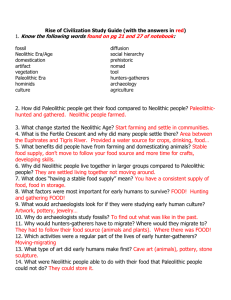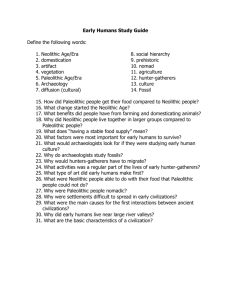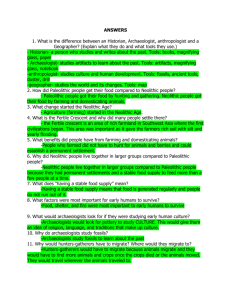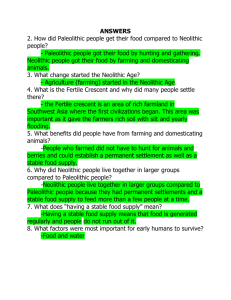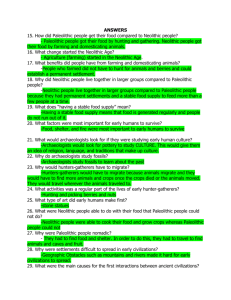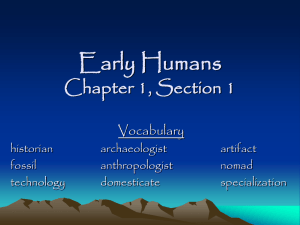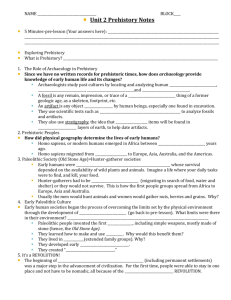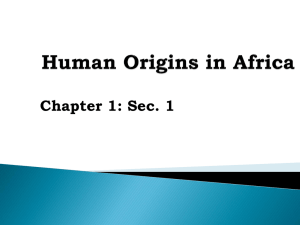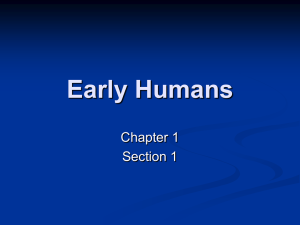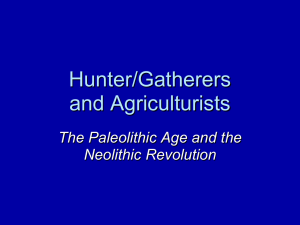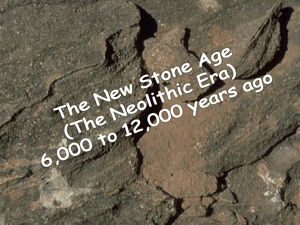Rise of Civilization Study Guide Define the following
advertisement
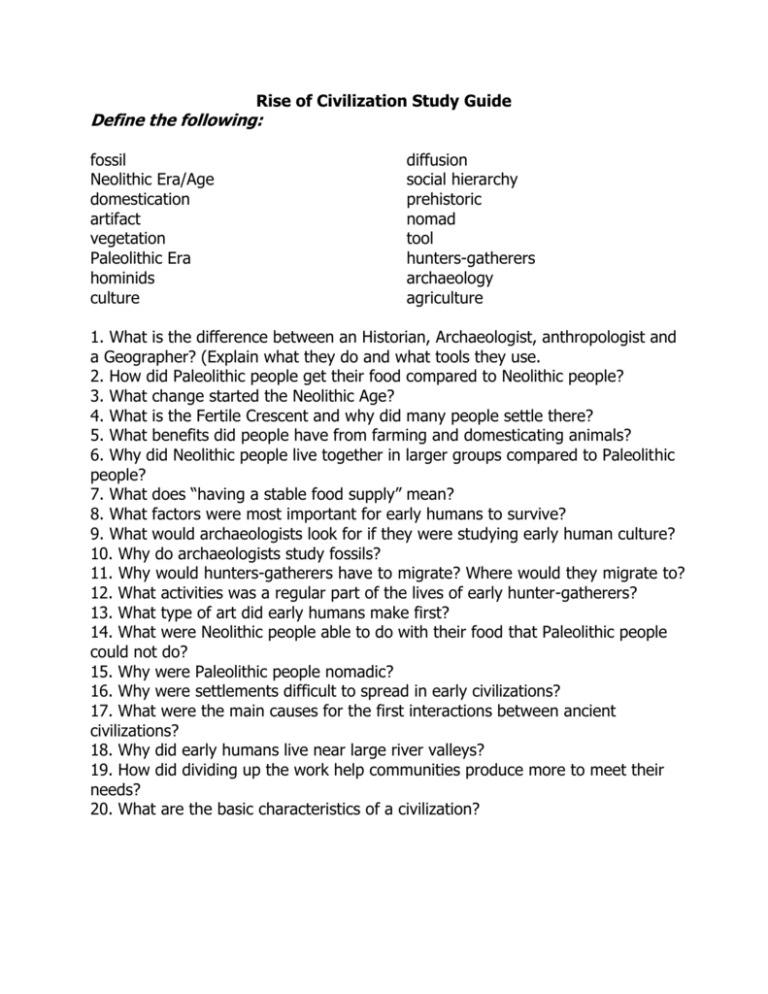
Rise of Civilization Study Guide Define the following: fossil Neolithic Era/Age domestication artifact vegetation Paleolithic Era hominids culture diffusion social hierarchy prehistoric nomad tool hunters-gatherers archaeology agriculture 1. What is the difference between an Historian, Archaeologist, anthropologist and a Geographer? (Explain what they do and what tools they use. 2. How did Paleolithic people get their food compared to Neolithic people? 3. What change started the Neolithic Age? 4. What is the Fertile Crescent and why did many people settle there? 5. What benefits did people have from farming and domesticating animals? 6. Why did Neolithic people live together in larger groups compared to Paleolithic people? 7. What does “having a stable food supply” mean? 8. What factors were most important for early humans to survive? 9. What would archaeologists look for if they were studying early human culture? 10. Why do archaeologists study fossils? 11. Why would hunters-gatherers have to migrate? Where would they migrate to? 12. What activities was a regular part of the lives of early hunter-gatherers? 13. What type of art did early humans make first? 14. What were Neolithic people able to do with their food that Paleolithic people could not do? 15. Why were Paleolithic people nomadic? 16. Why were settlements difficult to spread in early civilizations? 17. What were the main causes for the first interactions between ancient civilizations? 18. Why did early humans live near large river valleys? 19. How did dividing up the work help communities produce more to meet their needs? 20. What are the basic characteristics of a civilization? Rise of Civilization Study Guide Define the following: fossil Neolithic Era/Age domestication artifact vegetation Paleolithic Era hominids culture diffusion social hierarchy prehistoric nomad tool hunters-gatherers archaeology agriculture 1. What is the difference between an Historian, Archaeologist, anthropologist and a Geographer? (Explain what they do and what tools they use. 2. How did Paleolithic people get their food compared to Neolithic people? 3. What change started the Neolithic Age? 4. What is the Fertile Crescent and why did many people settle there? 5. What benefits did people have from farming and domesticating animals? 6. Why did Neolithic people live together in larger groups compared to Paleolithic people? 7. What does “having a stable food supply” mean? 8. What factors were most important for early humans to survive? 9. What would archaeologists look for if they were studying early human culture? 10. Why do archaeologists study fossils? 11. Why would hunters-gatherers have to migrate? Where would they migrate to? 12. What activities was a regular part of the lives of early hunter-gatherers? 13. What type of art did early humans make first? 14. What were Neolithic people able to do with their food that Paleolithic people could not do? 15. Why were Paleolithic people nomadic? 16. Why were settlements difficult to spread in early civilizations? 17. What were the main causes for the first interactions between ancient civilizations? 18. Why did early humans live near large river valleys? 19. How did dividing up the work help communities produce more to meet their needs? 20. What are the basic characteristics of a civilization?
